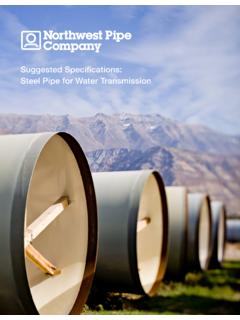Transcription of PolyMUMPs Design Handbook - MEMSCAP
1 PolyMUMPs Design Handbook a MUMPs process Allen Cowen, Busbee Hardy, Ramaswamy Mahadevan, and Steve Wilcenski MEMSCAP Inc. Revision Copyright 1992-2011 by MEMSCAP . All rights reserved. Permission to use and copy for internal, noncommercial purposes is hereby granted. Any distribution of this manual or associated layouts or any part thereof is strictly prohibited without prior written consent of MEMSCAP . Inc. GDSII is a trademark of Calma, Valid, Cadence. L-Edit and Tanner Database are trademarks of Tanner Research Inc. Table of Contents chapter 1.
2 Three-Layer Polysilicon Surface Micromachining Process .. 1. Introduction .. 1. Process Overview .. 2. chapter 2. PolyMUMPs Design Guidelines and Rules .. 11. Introduction .. 11. Design Rules .. 12. Beyond the Design 31. Film Parameters .. 35. EZ- PolyMUMPs Design Rules .. 38. Layout Requirements .. 38. Layout Submission .. 39. Custom Dicing, Releasing and Critical Point Drying .. 39. 3 - L A Y E R P O L Y S I L I C O N S U R F A C E M I C R O M A C H I N I N G P R O C E S S. chapter 1. Three-Layer Polysilicon Surface Micromachining Process Introduction The Multi-User MEMS Processes, or MUMPs , is a commercial program that provides cost-effective, proof-of- concept MEMS fabrication to industry, universities, and government worldwide.
3 MEMSCAP offers three standard processes as part of the MUMPs program: PolyMUMPs , a three-layer polysilicon surface micromachining process: MetalMUMPs , an electroplated nickel process; and SOIMUMPs , a silicon-on- insulator micromachining process. The following is a general process description and user guide for PolyMUMPs , which is designed for general- purpose micromachining of MEMS. chapter 1 of this document explains the process step-by-step, while chapter 2 outlines the Design rules for the process. Though this document is geared toward designers who do not have a strong background in microfabrication, it contains information that is useful to all PolyMUMPs users.
4 Regardless of the level of the designer, we strongly recommend all users of PolyMUMPs review this document prior to submitting a Design . 1 PolyMUMPs Design Handbook , Rev. C H A P T E R 1. F I G U R E 1 . 1 . Cross sectional view showing all 7 layers of the PolyMUMPs process (not to scale). Poly0 Poly1 Poly2 Metal st nd Nitride 1 Oxide 2 Oxide Figure is a cross section of the three-layer polysilicon surface micromachining PolyMUMPs process. This process has the general features of a standard surface micromachining process: (1) polysilicon is used as the structural material, (2) deposited oxide (PSG) is used as the sacrificial layer, and silicon nitride is used as electrical isolation between the polysilicon and the substrate.
5 The process is different from most customized surface micromachining processes in that it is designed to be as general as possible, and to be capable of supporting many different designs on a single silicon wafer. Since the process was not optimized with the purpose of fabricating any one specific device, the thicknesses of the structural and sacrificial layers were chosen to suit most users, and the layout Design rules were chosen conservatively to guarantee the highest yield possible. Process Overview The PolyMUMPs process is a three-layer polysilicon surface micromachining process derived from work performed at the Berkeley Sensors and Actuators Center (BSAC) at the University of California in the late 80's and early 90's.
6 Several modifications and enhancements have been made to increase the flexibility and versatility of the process for the multi-user environment. The process flow described below is designed to introduce inexperienced users to polysilicon micromachining. The text is supplemented by detailed drawings that show the process flow in the context of building a typical micromotor. The process begins with 150 mm n-type (100) silicon wafers of 1-2 -cm resistivity. The surface of the wafers are first heavily doped with phosphorus in a standard diffusion furnace using a phosphosilicate glass (PSG) sacrificial layer as the dopant source.
7 This helps to reduce or prevent charge feedthrough to the substrate from electrostatic devices on the surface. Next, after removal of the PSG film, a 600 nm low-stress LPCVD (low pressure chemical vapor deposition) silicon nitride layer is deposited on the wafers as an electrical isolation layer. This is followed directly by the deposition of a 500 nm LPCVD polysilicon film Poly 0. Poly 0 is then patterned by photolithography, a process that includes the coating of the wafers with photoresist (Figure ), exposure of the 2 PolyMUMPs Design Handbook , Rev.
8 3 - L A Y E R P O L Y S I L I C O N S U R F A C E M I C R O M A C H I N I N G P R O C E S S. photoresist with the appropriate mask and developing the exposed photoresist to create the desired etch mask for subsequent pattern transfer into the underlying layer (Figure ). After patterning the photoresist, the Poly 0 layer is then etched in a plasma etch system (Figure ). A m phosphosilicate glass (PSG) sacrificial layer is then deposited by LPCVD (Figure ) and annealed @1050 C for 1 hour in argon. This layer of PSG, known as First Oxide, is removed at the end of the process to free the first mechanical layer of polysilicon.
9 The sacrificial layer is lithographically patterned with the DIMPLES mask and the dimples are transferred into the sacrificial PSG layer in an RIE (Reactive Ion Etch) system, as shown in Figure The nominal depth of the dimples is 750 nm. The wafers are then patterned with the third mask layer, ANCHOR1, and reactive ion etched (Figure ). This step provides anchor holes that will be filled by the Poly 1 layer. After etching ANCHOR1, the first structural layer of polysilicon (Poly 1) is deposited at a thickness of m. A. thin (200 nm) layer of PSG is deposited over the polysilicon and the wafer is annealed at 1050 C for 1 hour (Figure ).
10 The anneal dopes the polysilicon with phosphorus from the PSG layers both above and below it. The anneal also serves to significantly reduce the net stress in the Poly 1 layer. The polysilicon (and its PSG masking layer) is lithographically patterned using a mask designed to form the first structural layer POLY1. The PSG layer is etched to produce a hard mask for the subsequent polysilicon etch. The hard mask is more resistant to the polysilicon etch chemistry than the photoresist and ensures better transfer of the pattern into the polysilicon.




